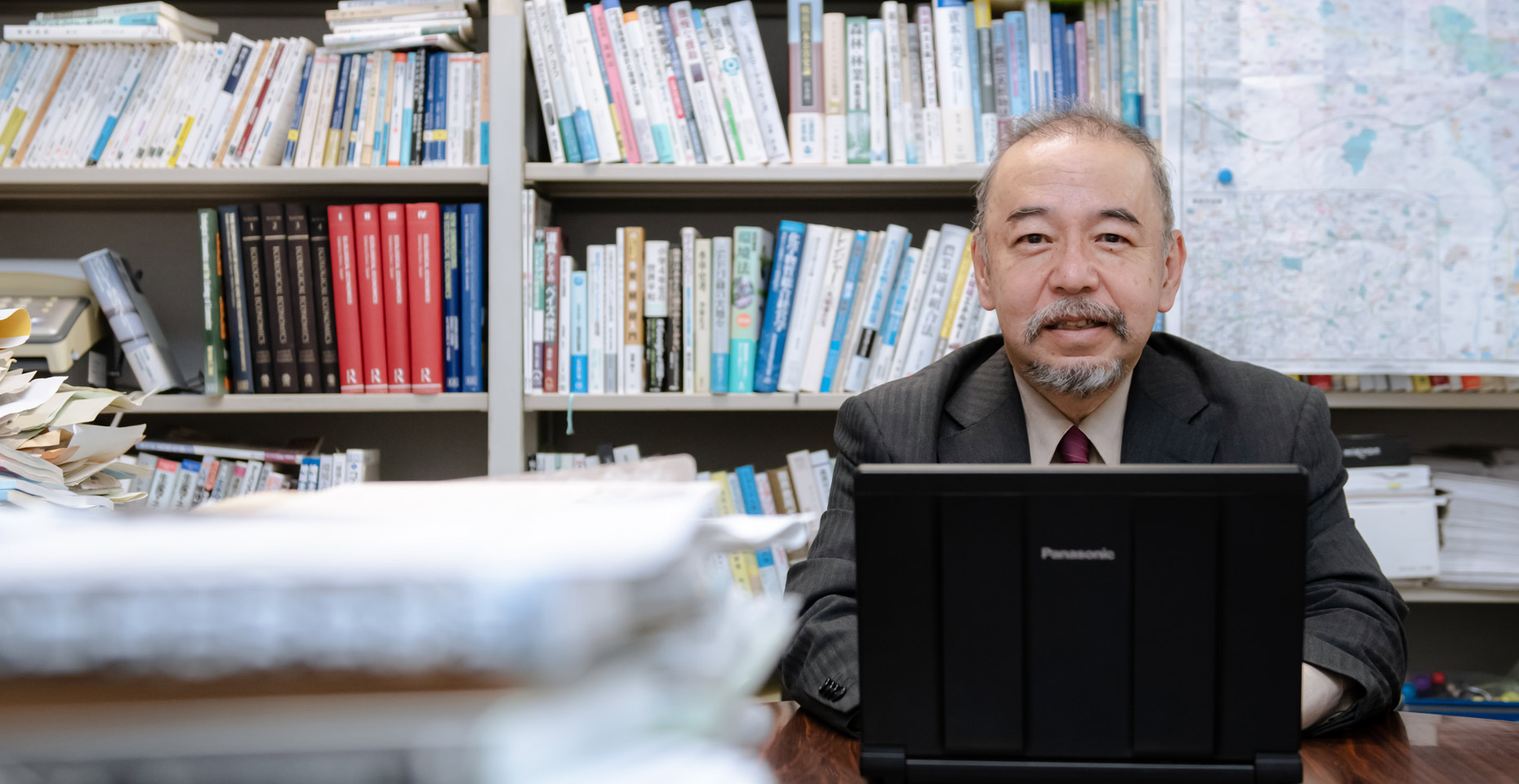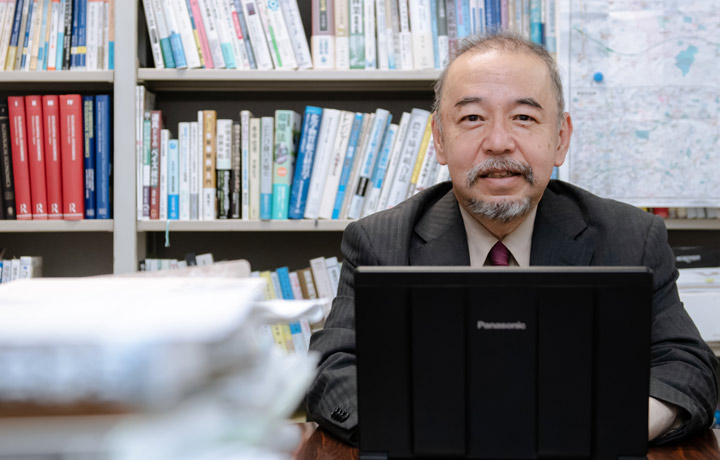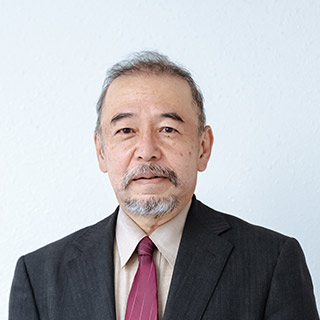In order to achieve the ambitious goal of carbon neutrality by 2050, it is essential to encourage a change in attitudes so that decarbonized investments are given top priority. In this regard, we interviewed Professor Kurasaka, who has spearheaded innovative initiatives such as workshops employing simulations and promoting local production and consumption of renewable energy.
Introducing sustainability perspectives to economics
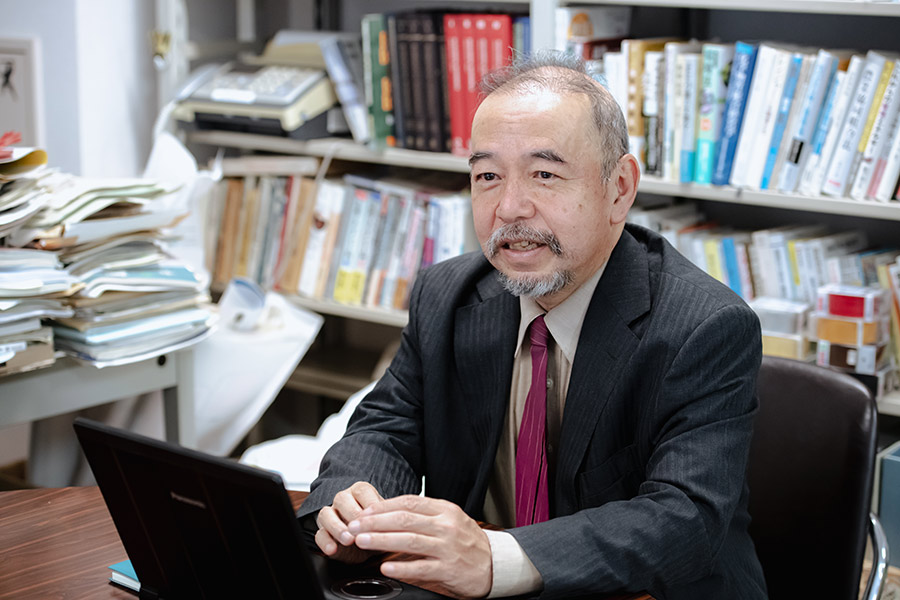
―Please tell us an overview of the “Economic theory of sustainability” you are advocating.
In 2021, I had the privilege of publishing my book titled “The Economics of Sustainability: The SDGs Era and “Capital Basism” through Toyo Keizai, publisher. This book aims to introduce a sustainable framework within economic theory. It distinguishes between ‘capital base’ and ‘throughput resources,’ which support economic activity. Throughput resources are those that do not remain after the usefulness has been provided and are integrated with the product, etc., while the capital base is those that remain after the usefulness has been provided. For example, the meat and gas flame used to serve hamburgers in a restaurant does not remain after the food has been served. These are ‘throughput resources.’
On the other hand, the frying pan and the cook remain afterward and are, therefore, ‘capital base.’ The labor required to sustain the functioning of the ‘capital base’ is ‘care labor.’ For example, if the frying pan is not washed, it will rust, and the cook cannot perform adequately without rest.
Traditional economics fails to distinguish between ‘capital bases’ and ‘throughput resources.’ In contemporary Japanese society, the population is declining and aging, and the infrastructure developed during the high-growth period is gradually aging. Looking ahead to the future of society, the importance of ‘care labor,’ which maintains and prolongs the life of the existing capital base, will outweigh the importance of production labor, which creates and supplies a new capital base.
Building a stakeholder-driven system to plan future measures for the community
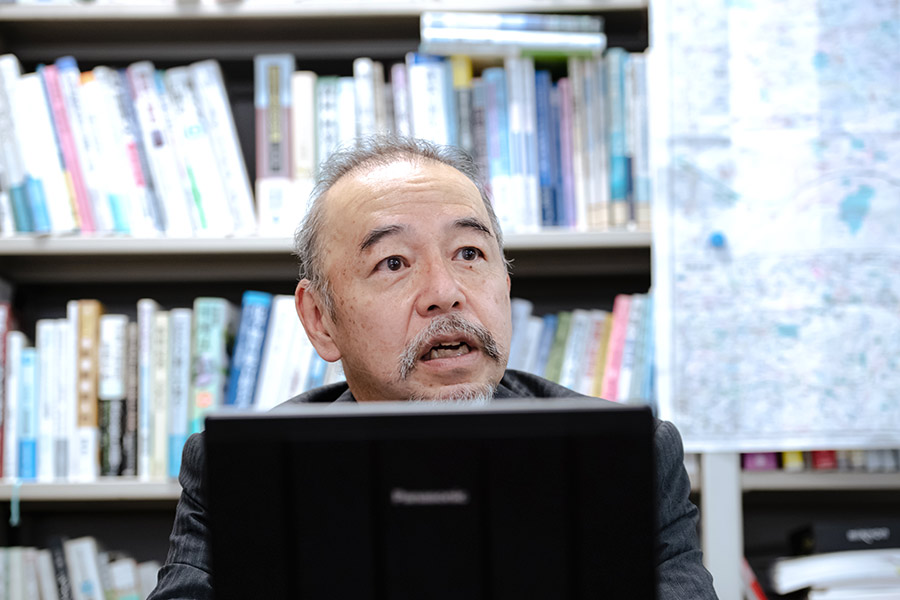
―What is the “Future Mayor Workshop?”
In a society facing a declining population, we have to address the long-term sustainability of capital bases. By 2050, the demographic landscape is expected to vary significantly across different regions. In areas experiencing population growth, the rate of elderly population increase outpaces other regions, highlighting the need for future provisions in nursing care. Conversely, rural areas often witness a significant decline in population, requiring thoughtful strategies to maintain social connections and ensure a high quality of life for residents. This entails exploring approaches such as compact living or attracting individuals from outside the region.
In any case, when contemplating long-term measures effectively, it is crucial to present predictions that illustrate the potential consequences “if we maintain the status quo.” By sharing these projections with a broader audience, we can foster a collective understanding of the challenges at hand. “The Future Chart” serves as a visually accessible tool, which I intend to present to young workers in their 20s as well as junior and high school students who will actively contribute to the workforce in 2050. Through this initiative, I aim to raise awareness and encourage individuals to voice their concerns. To facilitate this process, I have initiated a “Future Mayor Workshop” where we can collectively explore and develop actionable steps that can be taken.
―How has the response been to the Future Mayor Workshop?
The participants’ awareness undergoes a remarkable transformation, and the junior and senior high school students offer concrete policy proposals. In the post-event questionnaire survey, the top responses consistently highlighted the following: “I felt a sense of contribution to the local community,” “I developed a strong interest in exploring the local community,” and “I gained the ability to collaborate and think collectively with individuals from diverse backgrounds.
It is expected that when young people participate in the Future Mayor Workshop during their junior or high school years, they will bring back the valuable connections they have established outside their hometowns and contribute even after leaving for college or other educational pursuits. As an illustration, some alumni of the Future Mayor Workshop have formed an intercollegiate club and taken on the role of workshop facilitators on Tanegashima Island, where the workshop has been held for the past five years. This has created a positive dynamic where senior students mentor and guide junior students, fostering a continuous cycle of knowledge.
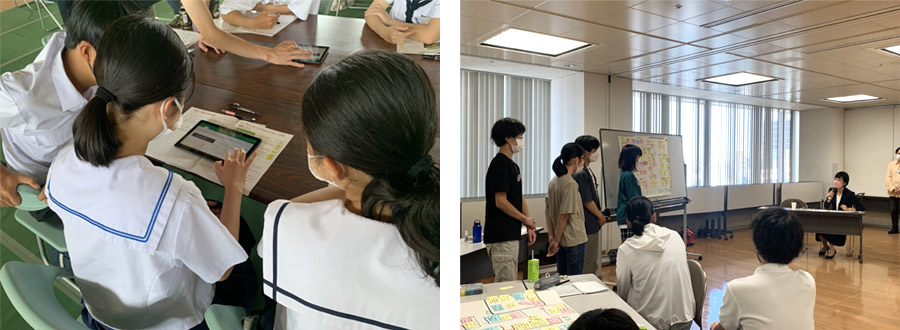
―Furthermore, you have also initiated the “Decarbonized Future Workshop” to collectively explore the path to achieving Carbon Neutrality within the community.
Yes. Decarbonization has emerged as an urgent imperative, supported by the enactment of legislation in Japan* to achieve carbon neutrality by 2050. In response to this critical issue, I have developed the “Carbon Neutral Simulator” as a tool to facilitate regional discussions and strategic planning for decarbonization efforts. The simulator was made available online in 2021.
*Japan enacted a partial amendment to the Act on Promotion of Global Warming Countermeasures on May 26, 2021. The amendment reinforces the fundamental principle of achieving a decarbonized society by 2050.
The ‘Carbon Neutral Simulator’ estimates how many buildings will remain in 2050 by the municipality based on their construction dates. After the first estimation is conducted, it requires inputting the ratio of zero-energy buildings categorized by their construction age. A zero-energy building refers to a structure that can reduce its energy consumption by approximately 70% through proper window insulation and the installation of specialized air conditioning systems that prevent heat loss. The remaining 30% of energy demand is offset by harnessing sunlight on the building, resulting in net-zero energy status.
Furthermore, concerning automobiles, the “Carbon Neutral Simulator” automatically calculates the projected number of privately owned and commercial vehicles in 2050 based on the population size of each municipality. Users can input the percentage of conversion to electric vehicles, hydrogen vehicles, and other alternatives. Additionally, the simulator estimates what percentage of the region’s renewable energy potential would be sufficient to meet the remaining energy demand. In essence, by utilizing the carbon-neutral simulator, it becomes possible to promptly determine whether the remaining energy can be supplied by renewable energy sources that can be generated within the region after implementing thorough energy conservation measures.
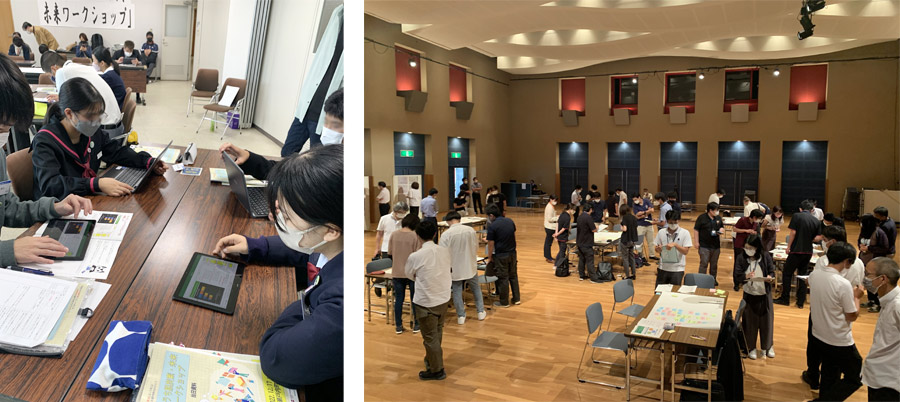
The “Carbon Neutral Simulator” and the “Future Mayor Workshop” have merged to form the “Decarbonized Future Workshop.” The workshop aims to encourage future generations to contemplate the future challenges of their communities using a tool named “Future Chart,” while also considering the goal of carbon neutrality. Both the “Future Chart” and the “Carbon Neutral Simulator” currently provide downloadable spreadsheet software, but there are plans to transition to a web-based platform in the future.
Simultaneous farming and power generation to become economically independent
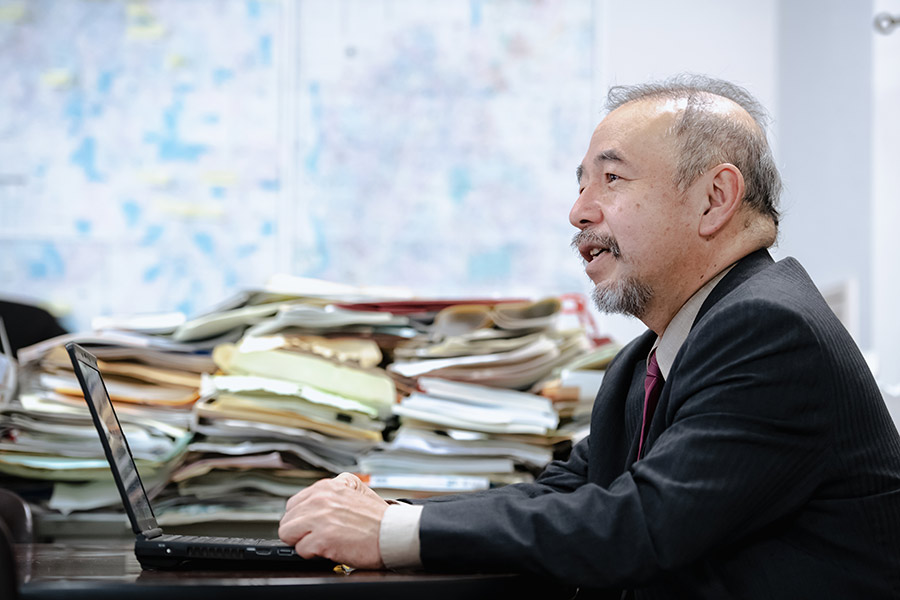
―Please explain what solar-sharing initiatives are.
Starting from October 2022, I have initiated research on solar sharing, a practice that combines agricultural and power generation activities on farmland, specifically employing a farm-type solar power generation system. Our aim is to expand the concept of “Decarbonized Smart Farmland,” integrating it with smart agricultural technologies. Solar sharing involves installing solar panels on farmland, allowing the separation of light for power generation from the light required for plant growth.
Considering that forests naturally play a crucial role in carbon dioxide absorption, I personally think it is preferable to refrain from cutting down mountains and installing solar panels. Instead, my focus lies on utilizing farmland for this purpose. While traditional solar sharing initiatives rely on income from selling generated power, I propose a different approach: maximizing the utilization of locally generated electricity to sustain the regional economy in a self-perpetuating manner. Through this endeavor, I aspire to create an agricultural area that can achieve both economic independence and long-term sustainability.

This project is being carried out in collaboration with Chiba Ecological Energy Inc., a Chiba University Startup. In addition to the existing solar-sharing initiatives involving leaf vegetables and fruit trees, we will be constructing solar-sharing equipment for rice cultivation next year. Furthermore, we will develop a practical course for Chiba University students to operate smart agricultural machinery utilizing solar-sharing equipment. The goal of this project is to advance the demonstration while collecting data and expanding its implementation throughout the country.
Carbon Neutrality is a meaningful endeavor to dedicate a lifetime to
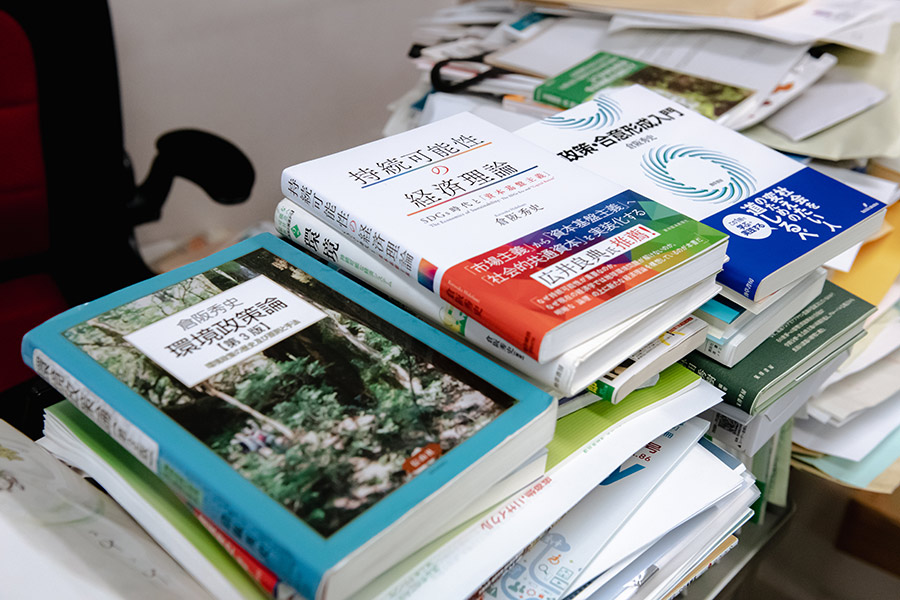
―Please give a message to students, early-stage researchers, and future collaborators
We are currently facing the challenge of a significant shift in energy sources by 2050. In order to achieve carbon neutrality, the role of university research is paramount. Various forms of technological development and their social implementation are necessary to accomplish this goal. It is desirable to have as many students as possible dedicating their lifelong research to carbon neutrality.
To effectively implement the carbon-neutral technologies developed by universities into society, the cooperation of private companies is essential. After decarbonization, renewable energy will become the primary source of energy supply worldwide. In order to have a customer base worldwide by 2050, it is necessary to envision the post-energy transition world, conduct backcasting from that point, and engage in economic activities accordingly. I would be delighted if all interested companies should collaborate with our university.
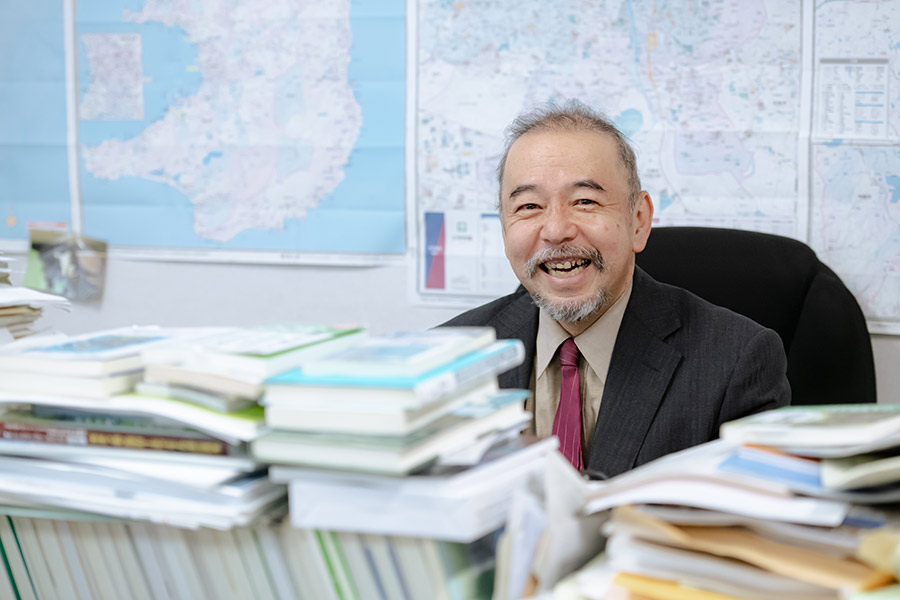
Series
The Role of Universities to Achieve Carbon Neutrality
What role should universities play in realizing carbon neutrality by 2050? This series will explore this question, accompanied by research conducted at Chiba University.
-
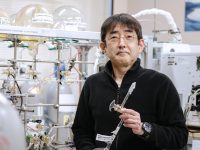
#1
2023.06.22
Harnessing CO2 with a Photocatalyst for Fuel and Plastic Feedstocks: Advancing a Sustainable Society with Chemistry
-
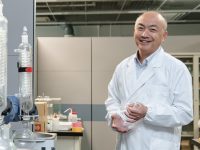
#2
2023.06.29
Unlocking Untapped Urban Resources: Driving Carbon Neutrality through Life Cycle Assessment
-
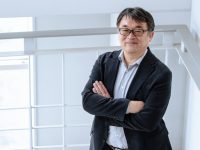
#3
2023.07.04
Predicting Future CO2 Absorption and Emissions in Terrestrial Ecosystems: International Geostationary Meteorological Satellite Network for Accurate Estimation
-
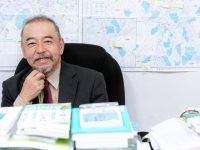
#4
2023.07.12
The Global Goal of Carbon Neutrality by 2050 (Part 1): Universities as Agents of Change
-
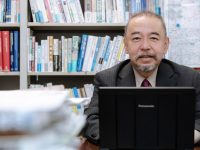
#5
2023.07.14
The Global Goal of Carbon Neutrality by 2050 (Part 2): A decarbonized society from a local perspective
-
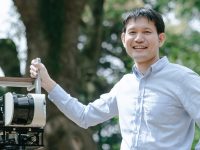
#6
2023.09.12
Reassessing the role of “Forest Resources” in achieving carbon neutrality: Measuring forests with the combination of drones, mathematics, and computer graphics
-
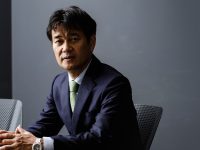
#7
2023.09.28
Navigating Offshore Wind Power Expansion: Nurturing Ocean-based Wind Energy Management Experts through Industry-Academia Partnership
Recommend
-
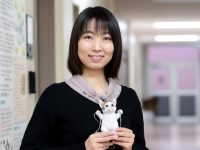
Unraveling the Mysteries of the Feline Mind: Insights from Animal Psychology
2023.05.01
-
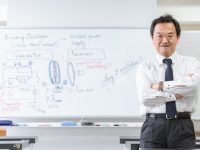
Bringing Japan’s renowned experiment-based science education to Southeast Asia: Developing sustainable physics teaching materials for the pursuit of a disparity-free society
2023.11.24
-

Interdisciplinary Collaborations to Solve Social Issues: Frontier Bioresearch at Chiba University
2023.03.17


